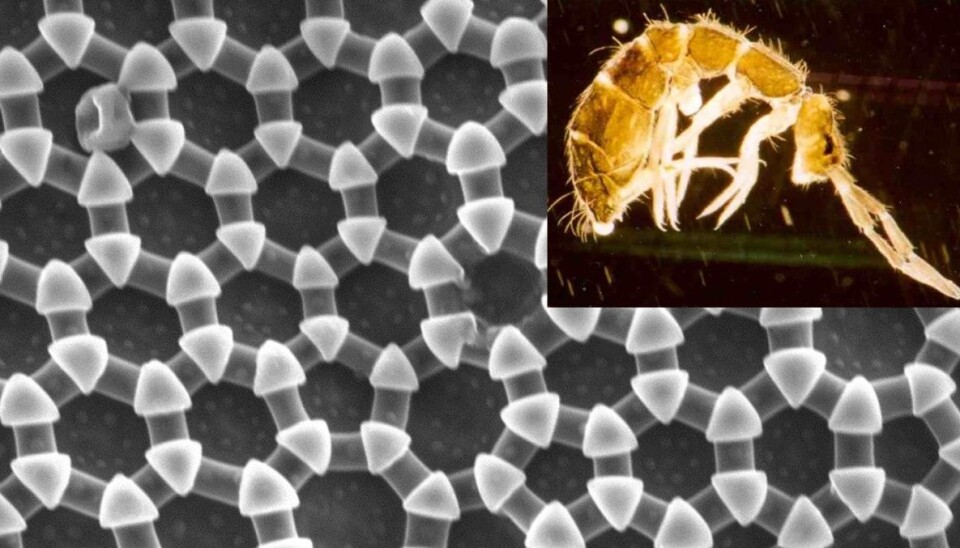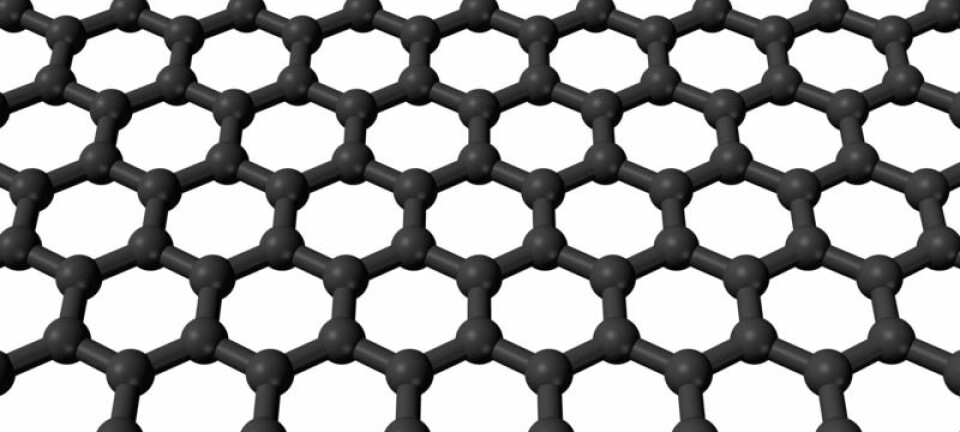
Springtails inspire great leap in super materials
Norwegian researchers are using insights from the animal kingdom in their quest to design new self-cleansing and water-repellant surface materials.
Denne artikkelen er over ti år gammel og kan inneholde utdatert informasjon.
Consider having a super material that keeps windows from ever getting dirty, or one that keeps the ice from building up on offshore installations in frigid waters. Or how about one that keeps barnacles and other marine organisms from attaching to the hulls of ships?
Professor Christian Thaulow and his colleagues at the Norwegian University of Science and Technology (NTNU)’s Department of Engineering Design and Materials are trying to make a super material patterned on the skin of tiny arthropods called springtails. These creatures were previously classified as insects.
Ordered pattern
Springtails live literally just about everywhere. Sometimes as many as 100,000 crowd into a single cubic metre of topsoil. They have adapted to highly diverse environments, from high up in the mountains to a life on the surface of small puddles.
One of the secrets of their success is revealed when we magnify their skin.

At first glance, the skin of a springtail looks rough and uneven. But an electron microscope reveals an order to the randomness. Scientists working with nanotechnology plan to copy such patterns.
The design is much too fine to be observed with the naked eye.
Twelve orders of springtails studied
Scientists dedicated to inventing new materials happened across springtails thanks to multidisciplinary collegiality ― Thaulow is a friend of Professor Hans Petter Leinaas of the University of Oslo, who has studied the ways in which these tiny creatures adapt to a range of environments.
“Nanotechnology is a highly multidisciplinary field requiring access to researchers from a large number of areas of science such as biology, physics, chemistry, materials science and engineering,” says Thaulow.
Thaulow and his colleagues have studied the nanostructure of the skin of 12 of the thousands of species of springtails. This dozen was selected based on the way their skin reflects the environments to which they have adapted.
Environmental approach
“The big problem is to create a surface that can bear a load or take a pounding. In nature, these kinds of surfaces are being continually repaired and renewed. But when used in artificial materials they can quickly be worn out or destroyed,” explains Thaulow.
Nanomaterials researchers are not just confident they can overcome this problem ― they think they can do it within two years.
“We now see to what degree we can copy this in an efficient and cheap way,” says Thaulow.
The materials scientists have also been inspired by nature in terms of producing the material.
“This involves a radically different way of thinking,” says Thaulow.
“Most natural systems make use of simple solutions consisting of a soft and a hard material,such as a protein and sand, which are layered to form a composite. Nature doesn’t use sophisticated materials that require high pressures and temperatures and such natural processes create no pollution. This is a really environmental approach.”
--------------------------
Read the Norwegian version of this article at forskning.no
Translated by: Glenn Ostling

































